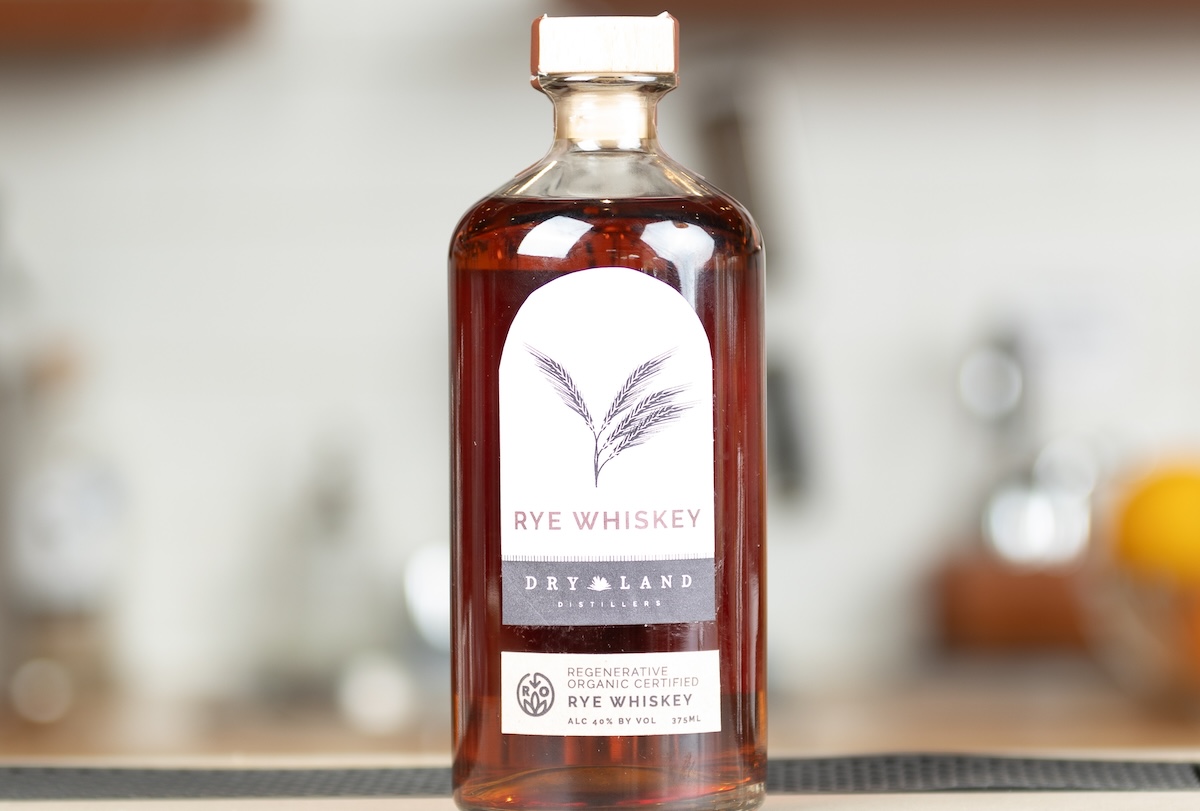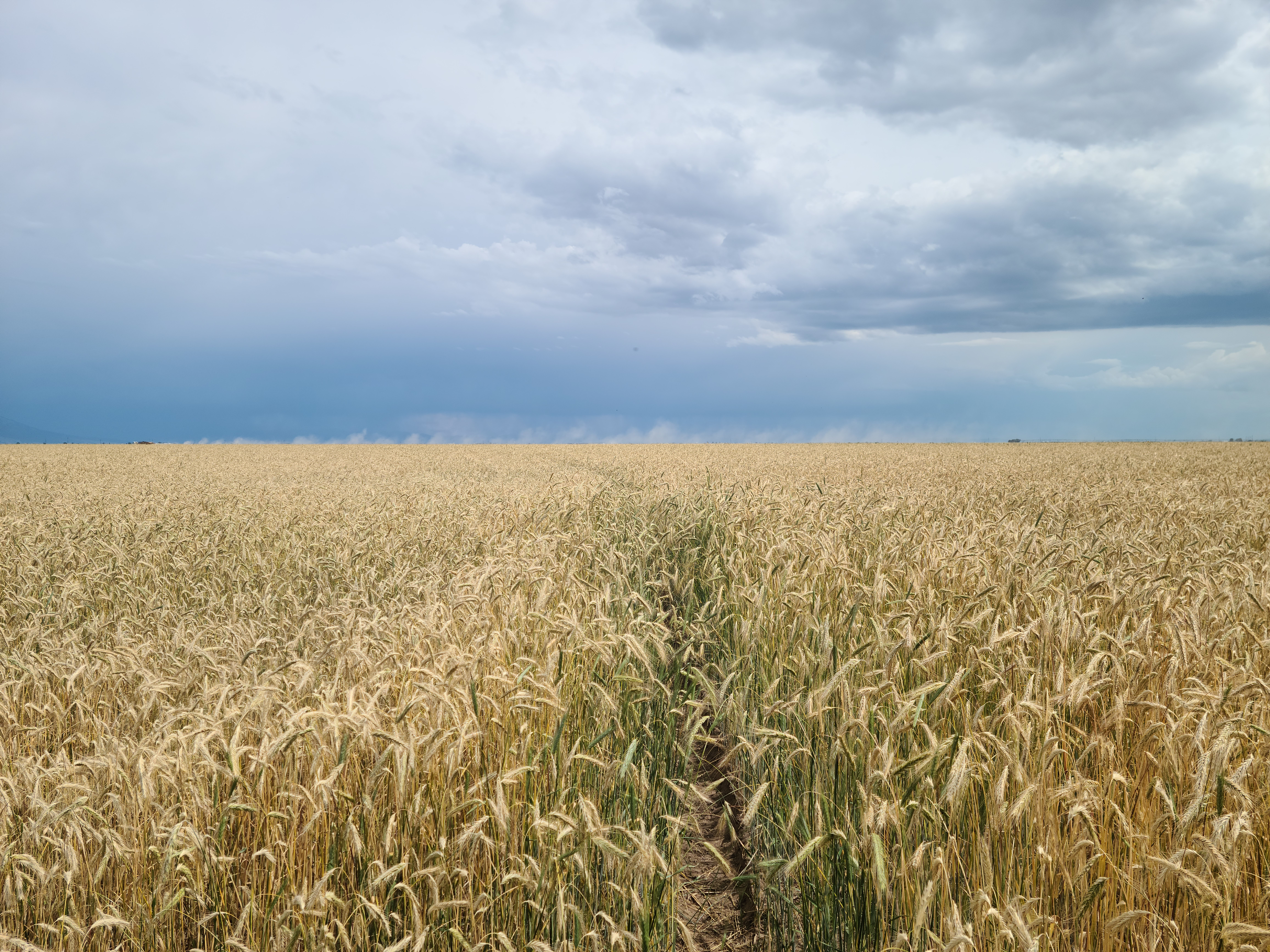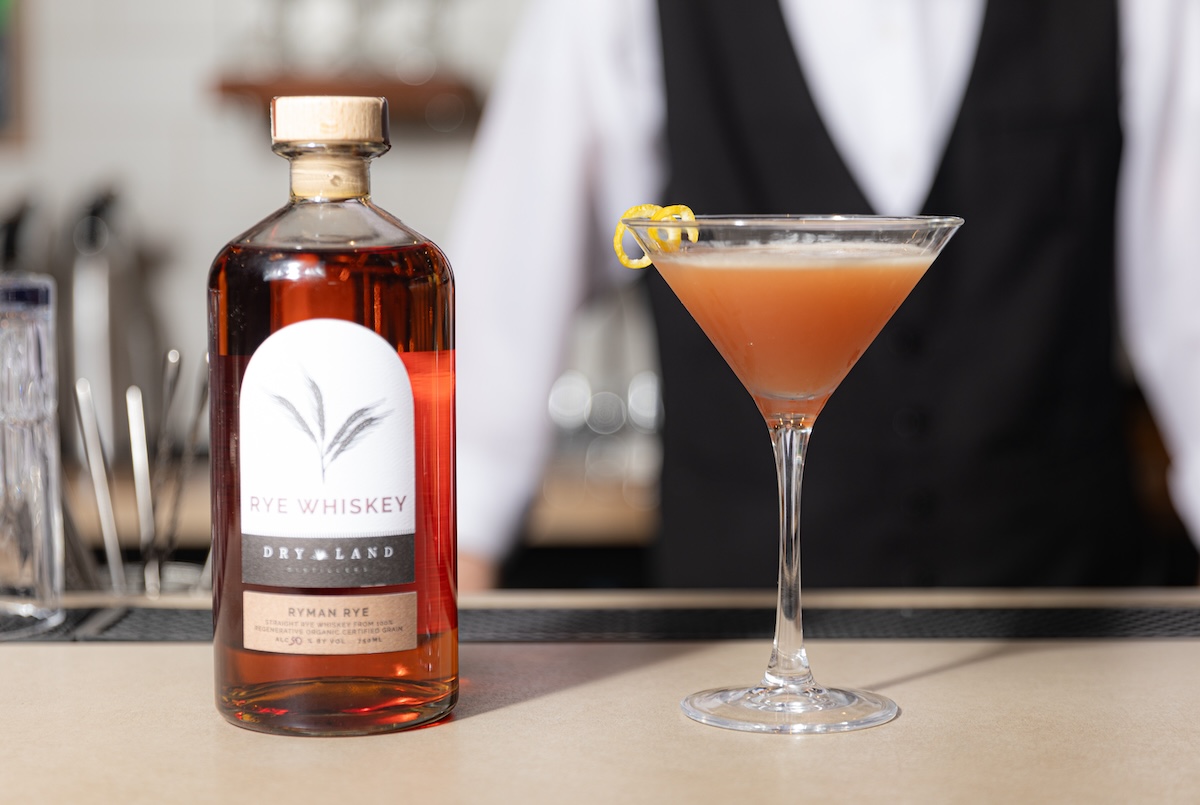At first glance, the new Ryman Rye Straight Whiskey from Dry Land Distillers doesn’t appear much different from its flagship counterparts. If you’re just comparing bottles, the Heirloom and Colorado Antero Wheat whiskies look nearly identical to each other and the rye. All bear the same white label, with an illustration of a single stalk of the Colorado grain used to make it.
But even if you can’t see it, the difference proves huge. Released this past July, the rye not only offers a fresh iteration of whiskey for guests to try, but it may help the distillery go down in history thanks to holding the title of the country’s first Regenerative Organic Certified® (ROC) rye whiskey.
“There’s a lot of intention in this bottle,” said Nels Wroe, Dry Land’s founder, which is why he took on the new single grain project, a rye using regenerative, organic wheat, to create a new type of spirit.

Ode to the American West
Like the Dry Land wheat whiskeys, which came onto the scene in 2017, the rye version matches Wroe’s intention to craft small-batch spirits with a purpose. That means honoring America’s West in sourcing sustainable ingredients grown specifically in Colorado’s “dry lands,” then translating the earthy essence into dynamic, delicious spirits.
“In other words, we’re just making a really beautiful product,” Wroe said.
But beauty isn’t enough to meet the distillery’s sustainability goals. As members of the Colorado Grain Chain (CGC), an organization promoting products made from ancient and heritage grains, the spirits at Dry Land also aim to showcase crops helpful to Colorado’s soil and farming communities.
As of now, this Longmont distillery remains the only known operation producing 100-percent, single-grain whiskeys from White Sonora and Colorado Antero wheats. Colorado State University developed and grew that latter grain.

“We can help to save or re-establish unique varieties of grains to reduce the commoditization of crops,” added Wroe. “It allows us to support communities and small growers in ways commoditized agriculture doesn’t allow.”
The company’s newest status as the world’s only known distiller producing ROC whiskey builds on that philosophy. It goes even further with the goal of saving water in the West, specifically Colorado’s San Luis Valley in the south-central part of the state.
The Why Behind the Rye
Dry Land’s rye whiskey marks a next big step in the distillery’s push to conserve water, especially in an industry notorious for its outsized use. According to the Beverage Industry Environmental Roundtable, distilling uses an estimated 10 times more water than beer and wine. Overall, distilling spirits requires an average 37-liters of water per one-liter of product
That’s where the drought-resistant Ryman rye comes in. Grown at Jones Farms Organics in Hooper, Colorado, the fourth-generation farm is the state’s only ROC grower. With Sarah Jones at the head, Jones Farm holds certification by the Regenerative Organic Alliance for meeting the world’s highest standards in soil health, animal welfare, and farmworker fairness.
Spearheaded by Jones, Ryman rye has helped push the demand for high-alpine rye amid grave drought conditions. While the San Luis Valley’s traditional cash crops include potatoes, barley, and wheat, growing them demands unsustainable levels of water from the Rio Grande River. The system isn’t sustainable given that current aquifer levels are so low, the supply may deplete within a decade.

“We have way too many straws in the cup,” said Jones. “Our [water] pumps will be shut down if we continue to farm the way that we’re farming.”
One of few winter cover crops able to survive the region’s harsh winters, rye’s deep root system holds precious topsoil in place and retains water in the soil, improving overall health.
“San Luis Valley has horrifying Dust Bowl problems right now because cover crops are no longer being grown,” said Wroe. “We are really trying to help reset agriculture in the San Luis Valley with a focus on water and topsoil retention.”
Rye grows easily on infertile lands and features a deep root system that can hold water and improve soil health, he added. It also requires one-half to one-third the water of crops like potatoes, alfalfa, and barley, so growing the grain means farmers can commit to using only surface water instead of drawing it from the aquifer.
Drink Rye and Help the Environment
Have you had rye? It’s a cereal grain not typically used in conventional food products the way wheat is. For Jones, the rye is the perfect substitute for wheat flour in baked goods like chocolate-chip cookies and, her personal favorite, brownies.

Many consumers mistake rye as having a bitter flavor, a direct result of the caraway seeds added to most mass-produced rye bread. So one of Jones’ objectives is to educate enough consumers about the grain’s neutral flavor. The goal, she added, is to get at least 10-percent of Colorado households switching to rye flour.
Bread and cookies aside, sourcing the grain for spirits like the Dry Land whiskey drives an even greater demand. Because of this, the farmers can transform rye from a cover to cash crop.
“Forty pounds of grain goes into each bottle,” said Kelly Dressman, Dry Land brand director. “So when you think about the impact that the distilling world can have on our local farmers, and when we do use grains that are true to place, it’s huge.”
The Ryman rye whiskey is among the one of the world’s few carbon-positive spirits, which happens when regenerative growing practices return carbon to the soil. This method improves fertilization. In essence, a statement on the distillery’s site, sipping a glass of Dry Land rye whiskey means you’re drinking carbon.
“It might seem corny,” Dressman said. “But we are trying to change the world in some small way that can have a large impact and become a bigger way later on.”
Enjoy That Glass of Carbon
Rye whiskeys are known for their robust, spicy flavor, but the Ryman grain adds a silkiness to the drink that many rye enthusiasts aren’t accustomed to, said Dressman. The newest spirit also fulfills the Dry Land grain-forward approach, which highlights a primary ingredient. Because of this, the rye’s distinct complexity shines with a, “beautiful warmth and heat,” added Wroe.
Visitors to the tasting room can choose from an extensive menu of craft cocktails and small bites made from local, seasonal ingredients, as well as some bites utilizing edible remnants from the distilling process.
Dressman’s best suggestions for rye-whiskey cocktails include classics such as a Sazarac or Manhattan. Pair it with items both savory and sweet, from mushroom pate to seasonal empanadas. On the dessert side, look for dark-chocolate favorites such as treats from the Longmont-based Robin Chocolates or chocolate-chip rye cookies baked in-house using Ryman rye flour.
Although the Zero Batch bottles sold out shortly after the July 27 release date, the current and final third release should last through 2024, Dressman said. After that, the next release comes in summer 2025.
Visit the Dry Land distillery and tasting room on Wednesday and Thursday from 4 to 9 p.m., Friday from 3 to 10 p.m., Saturday from 2 to 10 p.m., and Sunday from 1 to 6 p.m. 519 Main St., Longmont, drylanddistillers.com

